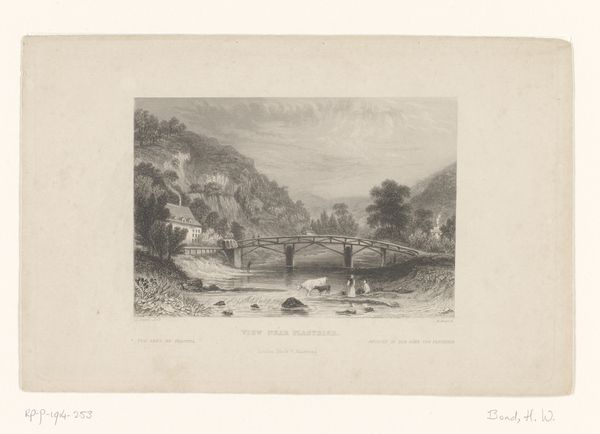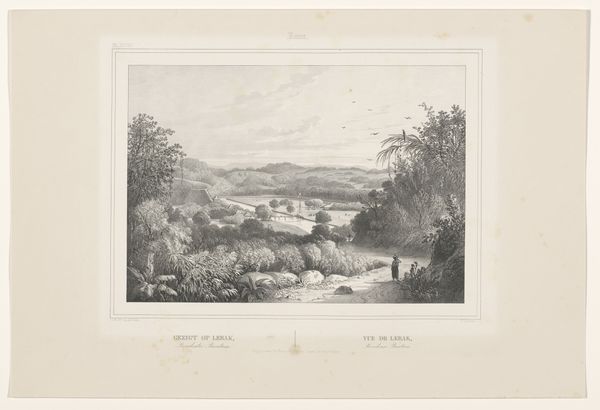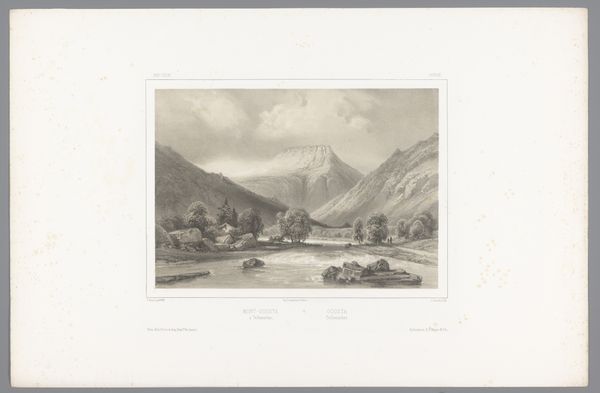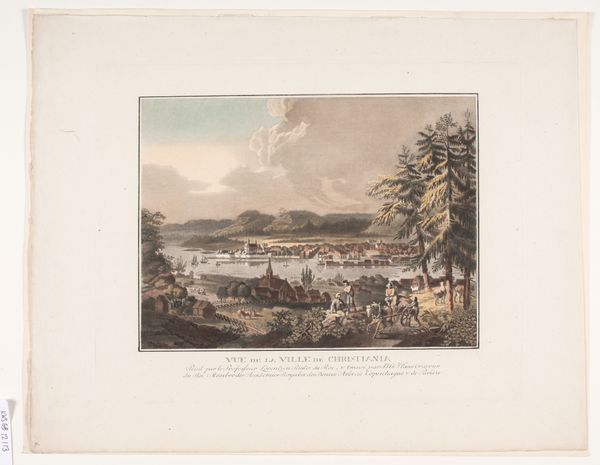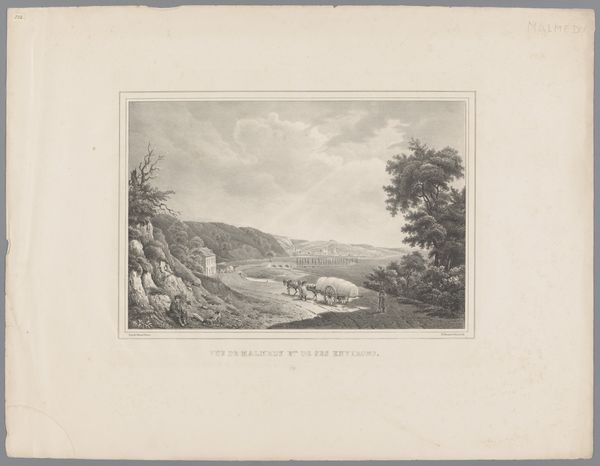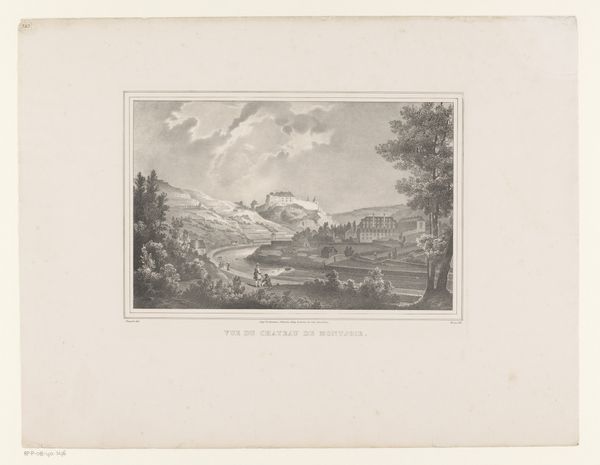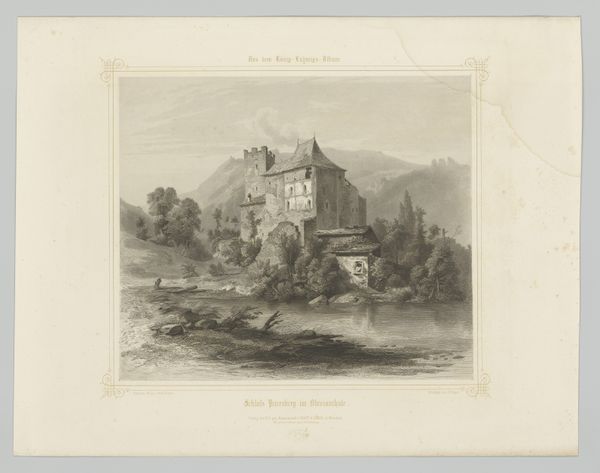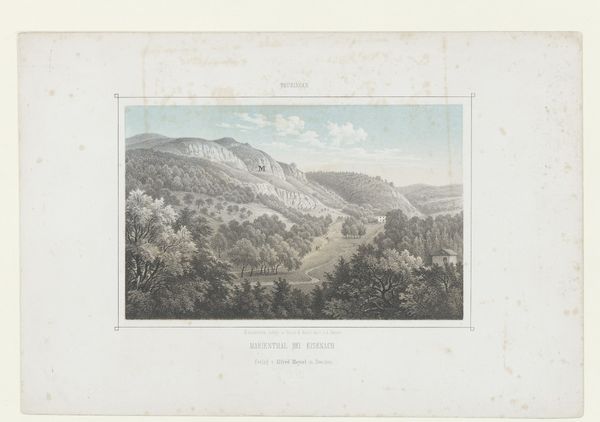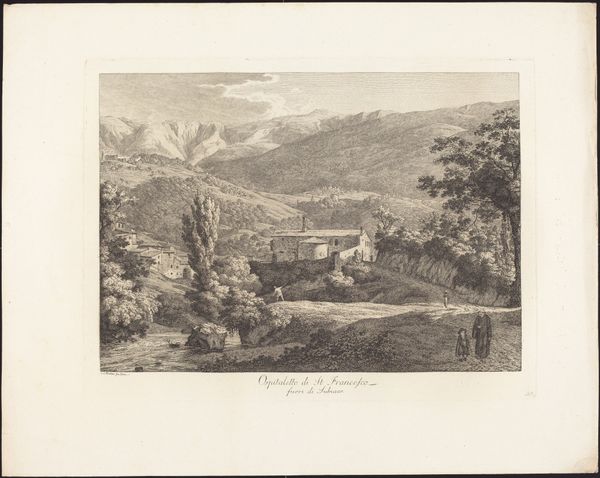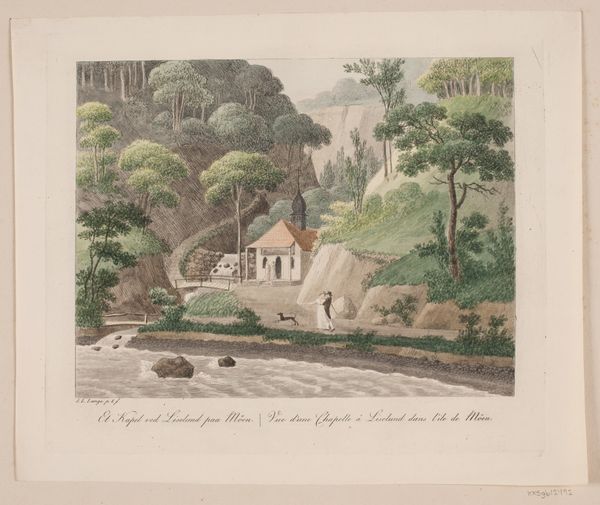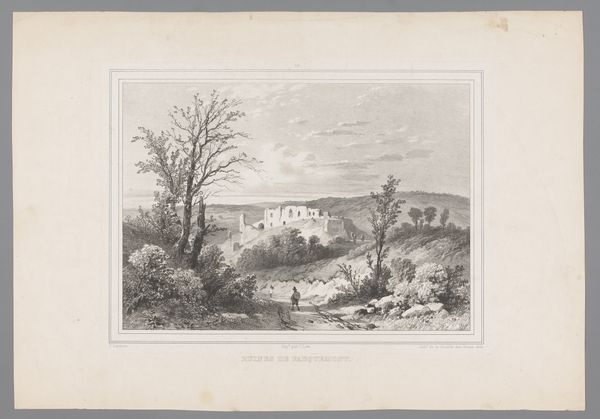
mixed-media, watercolor
#
mixed-media
#
water colours
#
landscape
#
watercolor
#
coloured pencil
#
romanticism
#
mixed medium
#
mixed media
Dimensions: height 307 mm, width 439 mm
Copyright: Rijks Museum: Open Domain
Curator: This is Louis Jules Frederic Villeneuve’s, "Gezicht op het Trasimeense meer in Italië," dating from 1835. It's rendered in mixed media including watercolour and coloured pencil. Editor: My initial impression is of a subdued romanticism. The colour palette is restrained, almost muted, which lends a melancholic atmosphere to this vista. It's formally quite pleasing, but something about it feels passively observed. Curator: That passivity may speak to a broader sentiment within Romanticism itself, particularly among landscape artists engaging with the Italian peninsula. They are, after all, viewing it through a complicated lens of colonial history and the power dynamics inherent in travel and representation. The ‘grand tour’ was, for many, an act of privileged consumption. Editor: Yes, but even taking that historical context into account, notice how Villeneuve organizes the composition. The careful arrangement of light and shadow, the strategic placement of each architectural element—each is oriented in a way that creates depth and visual interest, guiding our eye through the scene. The structure suggests a focus on idealized forms rather than sharp critiques of power. Curator: But is that idealism divorced from the historical conditions that enable it? Who are the inhabitants of those buildings, what relationship do they have to the land and to those who "tour" through it? It prompts the question: Whose experience are we prioritising in this image? Editor: While those questions are valid and vital, let's not discount the pure artistry on display. Look at how the artist renders the foliage, each stroke contributing to a sense of texture and depth, and how the subtle variations in tone capture the reflection of light on the water. The aesthetic value here resides in the skilled manipulation of form and colour to create an immersive, visually pleasing experience. Curator: It's a delicate dance, isn’t it? To appreciate formal skill without losing sight of the power structures informing the very possibility of its creation. I'm left thinking about the artist's own positionality, their gaze shaping the narrative of this place and time. Editor: And I, appreciating your insights, will return to the masterful deployment of mixed media and structural considerations that compose an aesthetically unique piece, illustrating art’s power to shape one’s perspectives.
Comments
No comments
Be the first to comment and join the conversation on the ultimate creative platform.
